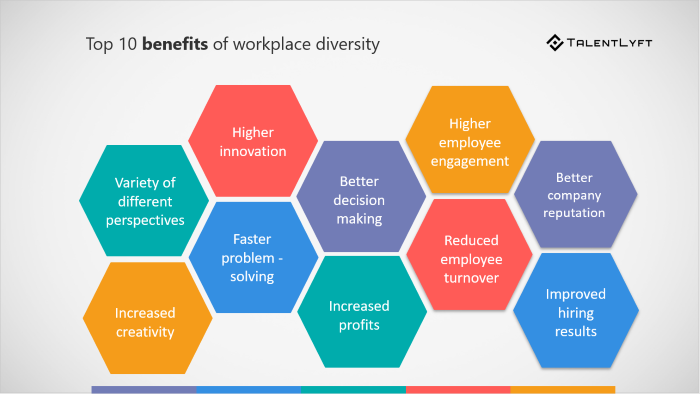
Diversity and inclusion are vital aspects of any successful workplace. Embracing diversity enables companies to harness the power of unique perspectives, experiences, and backgrounds to drive innovation and creativity. In this article, we will explore the importance of diversity and inclusion in the tech industry and how it benefits both companies and employees.
Why Diversity Matters
Diversity goes beyond representation. It is about fostering an environment where everyone feels valued and respected, regardless of their race, gender, age, sexual orientation, or abilities. When a tech company prioritizes diversity, it opens doors to a wider range of skills, perspectives, and ideas. This ultimately leads to better problem-solving, increased productivity, and a stronger competitive edge.
1. Enhanced Creativity and Innovation
Diverse teams bring together individuals with different life experiences and cultural backgrounds. This diversity fosters a rich exchange of ideas and fuels creativity. When employees come from various backgrounds, they bring unique perspectives that can lead to innovative solutions and fresh approaches to challenges.
2. Improved Problem-Solving
Different perspectives result in a broader understanding of issues, leading to more effective problem-solving. By embracing diversity, tech companies gain access to a wide range of skills, knowledge, and experiences. This allows for a thorough analysis of complex problems and the development of comprehensive solutions.
3. Expanded Market Reach
A diverse workforce enables tech companies to better understand their target audience. By having employees from various backgrounds, companies can tailor their products and services to suit the needs and preferences of a wider customer base. Inclusivity promotes cultural competency and enables businesses to build strong relationships with diverse communities.
Creating an Inclusive Workplace
Building an inclusive workplace requires a concerted effort. Here are some strategies that tech companies can implement to cultivate diversity and inclusion:
1. Hire Based on Merit and Potential
Focus on skills, experience, and potential when hiring, rather than solely relying on traditional markers of success. Implement blind hiring practices to eliminate unconscious biases and ensure a fair evaluation of candidates.
2. Foster an Inclusive Culture
Create an environment that values and celebrates differences. Encourage open dialogue and active listening, allowing employees to share their perspectives without fear of judgment. Implement diversity training programs to promote awareness and understanding among the workforce.
3. Provide Equal Opportunities
Ensure that all employees have access to the same growth and development opportunities. Offer mentorship programs and sponsorships to support underrepresented groups, helping them advance their careers within the organization.
4. Establish Employee Resource Groups
Encourage the formation of employee resource groups (ERGs) that provide support and representation for different communities within the workplace. ERGs can foster inclusivity, drive initiatives, and offer a platform for employees to share their experiences and perspectives.
Conclusion
Diversity and inclusion are not merely buzzwords but necessary ingredients for success in the tech industry. Embracing diversity in the workplace fuels creativity, stimulates innovation, improves problem-solving, and expands market reach. By implementing strategies to create an inclusive culture, tech companies can unleash the full potential of their workforce and cultivate an environment where everyone feels valued and empowered to contribute their best.

